ArteCalle Interjections within Contours Corporealities
*This article went through a peer review process with all identities visible to editors, reviewers and authors.
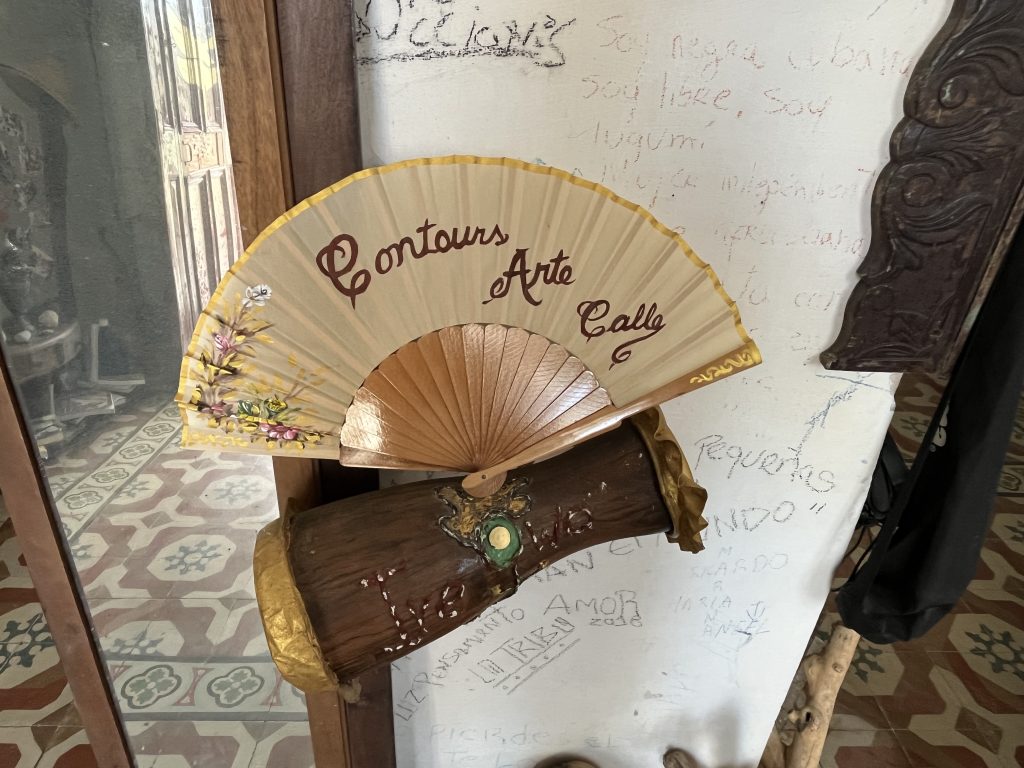
In Marianao, Cuba, in March 2023, the Contours planning team sat down on handmade pillows with rainbow flag patches that covered the wooden pallets in the sunlit patio at collaborator Myrna Rosa Padrón Dickson’s house, the Casa Tomada mirArte. The patio had actually been two rooms at one point in the history of the casa, and now it is a long, roofless, outdoor space. Myrna said she wanted to talk with us about the publication project. She had been excited about co-conceptualizing the framework and content of Edition 2 in person. Her enthusiasm and commitment to the collaboration was evident, and she had several questions about the structure of this relationship and how we would integrate performance. Myrna had written an article for Edition 1, but with Edition 2, she was going to play a fuller part in the planning stages.
The conversation we were about to have led not only to a co-articulation of our Contours corporealities – our relationalities weaving together amidst our cultural and political understandings of the world – but a renaming of the publication itself. In 2022, Contours: Arts. Activism. Pathways had unrolled a mapful of possibilities, and in 2023 it was about to become Contours ArteCalle. The titular terms defining Edition 1, “arts” and “activism,” had been meant to identify the focus of Contours while “pathways” pointed to the methodology. For me, pathways signaled the many possibilities for our project within our various landscapes, our corporealities, as theorized by the square abstract graphic relief map Contours logo. In calling attention to pathways, I was intentionally alluding to a mode of movement that many Cubans know well, one that is aligned with the Afro-Cuban Orisha Eleguá, the one who opens the various routes one might travel spiritually, emotionally, physically, academically, artististically, activistically, or otherwise, at the beginning of Yoruba ceremonies and folkloric shows. The change would actively name the performative, experiential aspect of Contours, and also agitate understandings of the term “open access.”
Edition 2 marked a shift in the way we wanted to activate a more collaborative and experiential way of working together, starting with the way we hoped to choreograph our bubbling visions. Before we began the lluvia de ideas (the brainstorm session), Myrna wanted to understand more about the shifting relationship structure.
Myrna: What exactly is this collaboration for Edition 2? Are we collaborating with Cindy García, Contours, or the University of Minnesota? Is the Casa Tomada part of Contours, or Contours part of Casa Tomada? Am I a collaborator – Myrna – or is La Casa Tomada the collaborator?
Myrna’s questions were critical to the way we imagined and acted upon our new and deepening relationships.
Cindy: My thought is that La Casa Tomada is La Casa Tomada, an independent project as always. Myrna, you and I are part of the Contours collaborative, and you might choose to bring in your networks and spaces that are part of La Casa Tomada. The University of Minnesota Libraries publishes the editions we put together. What do you think?
Myrna: For me, Casa Tomada has a joint collaboration with the editorial group Contours. This is a digital magazine where its representative is Cindy García, a tenured professor at the University of Minnesota, which is an essential support in research and production.
In the past, Myrna has joked with me about not being sure when she is Myrna the person, or Myrna who represents La Casa Tomada mirArte. The reason I think that we should distinguish between Myrna and La Casa Tomada is so that Myrna can decide the terms of La Casa Tomada’s collaboration in Contours activities. At the same time, Myrna the person is part of Contours and helps to shape Contours relationships with people and groups. Importantly, collaborators within Contours are not part of La Casa Tomada (except for Myrna), although we work together. One important part of our structural articulation is that Contours as a project does not make decisions for La Casa Tomada mirArte.
With all of our distinctive and overlapping relationships, each of us as collaborators was more than a supposed singular body. Myrna’s question highlighted that our relationships in Contours necessarily do not revolve around the idea of individuality, but rather our bodies in relation, our bodies in politics and culture, and with varying histories. We needed to sort out how we imagined the way our corporealities intersected. I believe this sorting out was not a one-time process because our corporealities are convoluted and constantly shifting. It was crucial to articulate these relationships for our ambitious – possibly reaching a global audience – open access publication.
Myrna: You say open access. It might be open access in the U.S. where people regularly have internet access that doesn’t cost so much. Here, no one really wants to open up the link. It takes so many megas because of all the photos. No one has money to buy so many megas. Plus, who is going to read all of this?
Cindy: That is one reason we thought of doing an exhibition for the opening of the publication. Maritza (coordinator of El Proyecto La Muñeca Negra) has a connection with a gallery in La Lisa, and we could have a party with storytelling and presentations and an exhibition of all the dolls.
Myrna: The problem with a gallery is that only some people feel welcome there. Think about who goes to galleries. If we want our work to be really open to everyone, what if we present it in spaces where everyone could be part of it? Right in the neighborhood? Like arte calle?
Arte calle literally refers to street art, art in the streets. When I think of street art, I think of art in public spaces that has not necessartily been condoned or invited. Sometimes street art pushes against a government, society, or even the possibly uninviting space of an art gallery. Arte calle addresses more than the location of art. It also opens up imaginations of who might be an artist and how art might exist in our everyday lives. Everyday art as opposed to what might be considered masterpieces worthy of auction houses and fine museums. In our conversations in 2019, Myrna and I had imagined collaborating on future performances, such as the one for Edition 2 that was beginning to take shape.
At this point in the conversation, the performative and experiential aspects of the publication began to whirl together a number of floating intentions that Maxine Nwigwe, a co-creator of the first edition, and I had imagined. Myrna’s arte calle interjection coupled with the open access challenge added methodological dimension to Contours as not only a digital publication but one that we could perform live in order to experience the edition with Myrna’s neighbors and also her arts, activist, and academic networks.
I reflect on how much I have learned about Cuban corporealities from Myrna since I met her in 2018. In many ways, our ideas and visions overlap in intention, but Myrna is the one who has the knowledge of how to bring them to life in her neighborhood and along other pathways in Cuba. When all of the contributors and collaborators met in Cuba in February 2024, we enacted the renamed Contours ArteCalle for eight days. We shared and made dolls at El Proyecto La Muñeca Negra. At Sira González’ home, Shalom, we presented and learned about HIV/AIDS with contributor Cynthia Davis of Drew University and Havana-based community health groups.
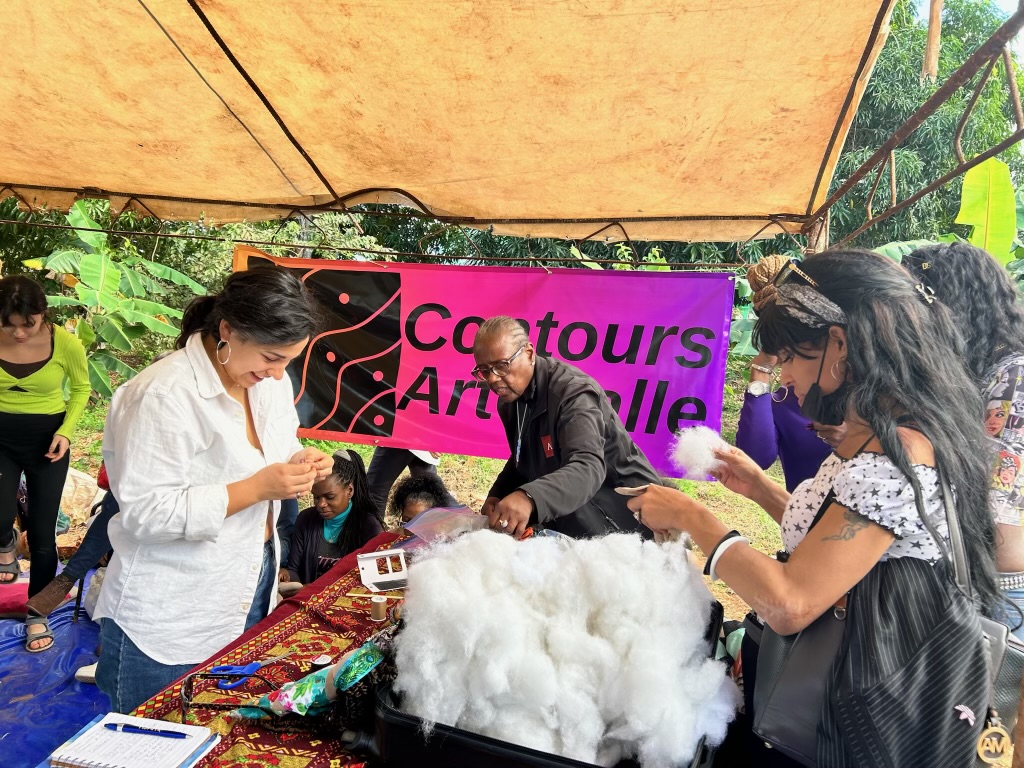
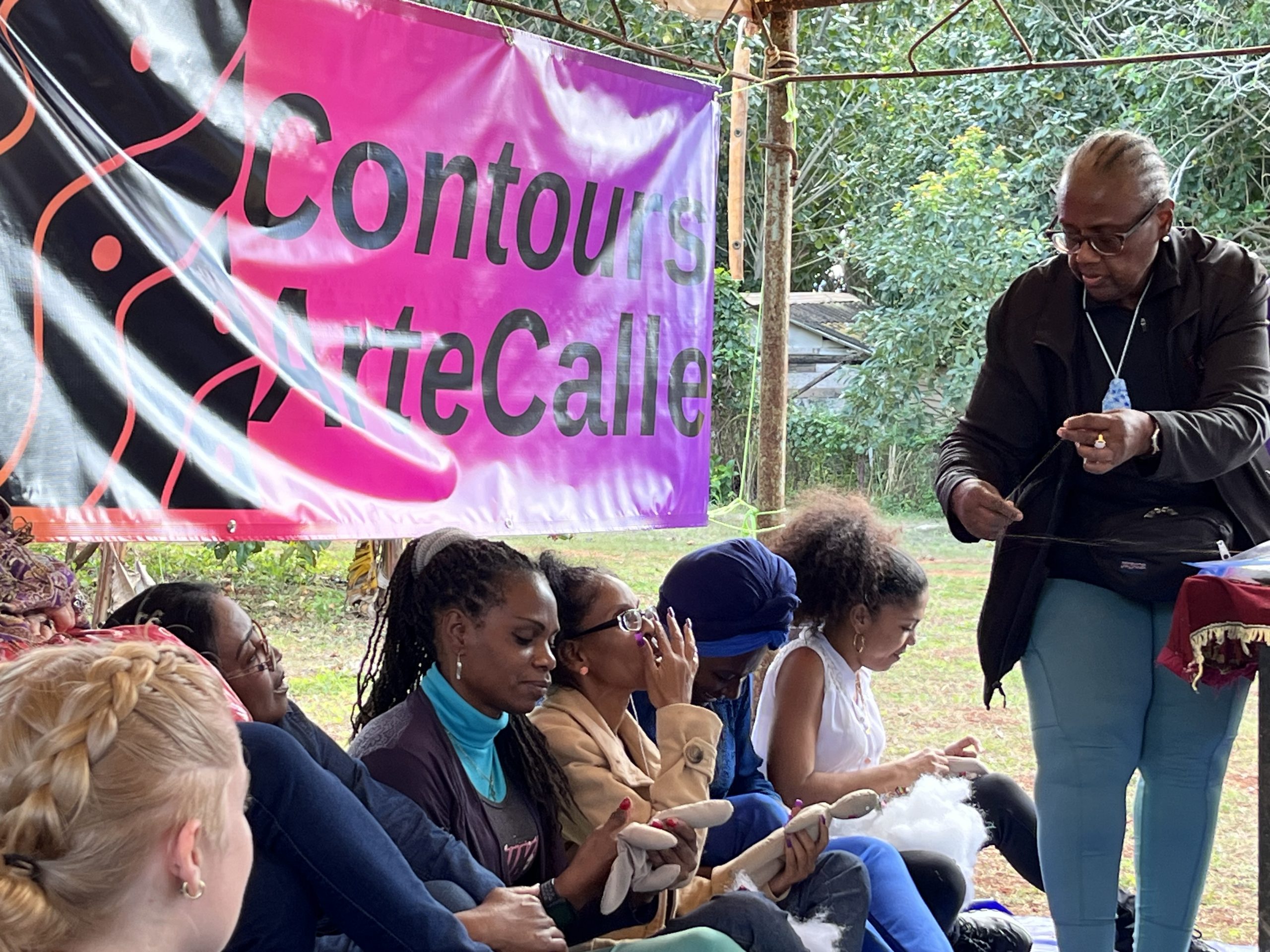
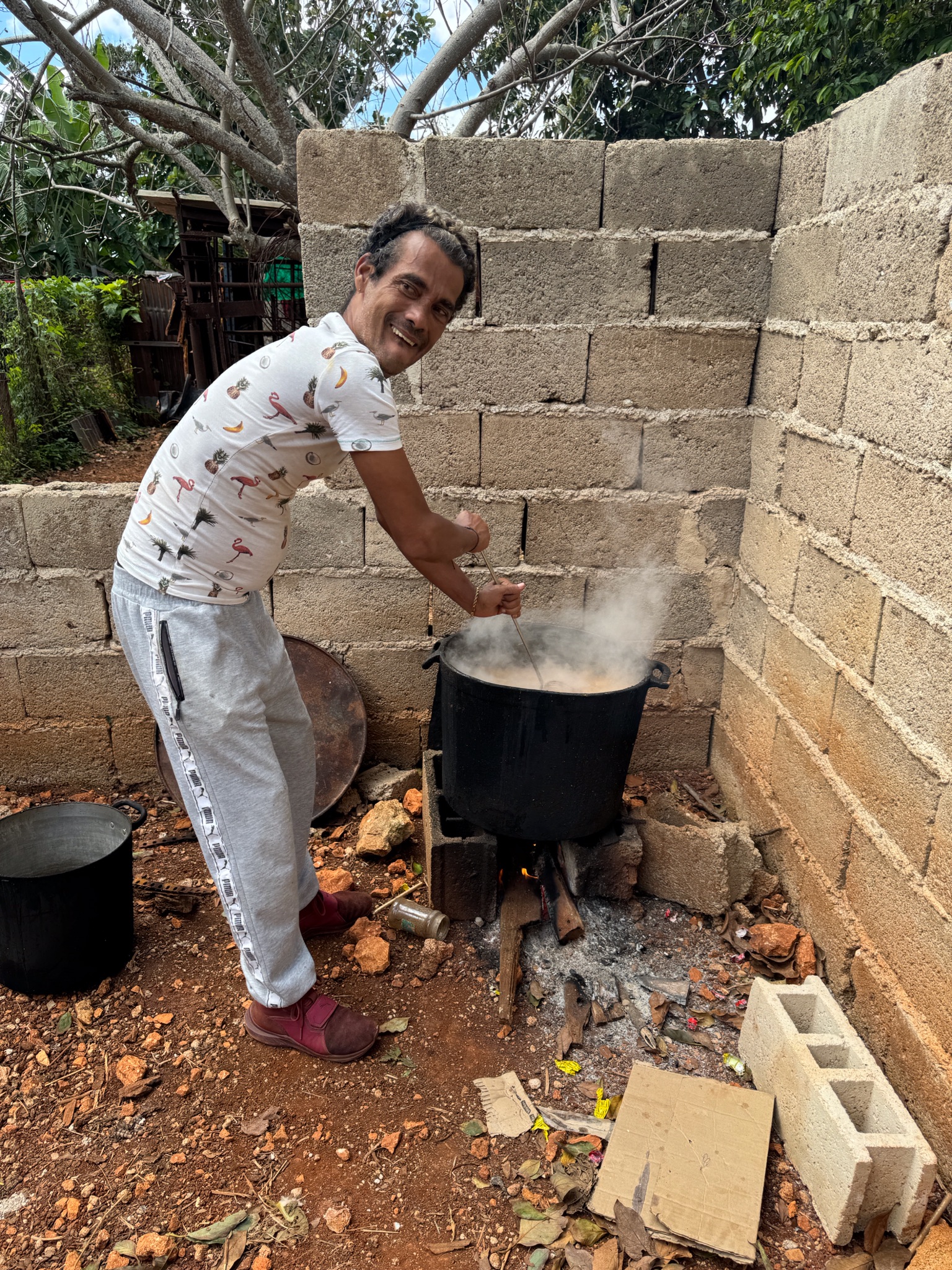
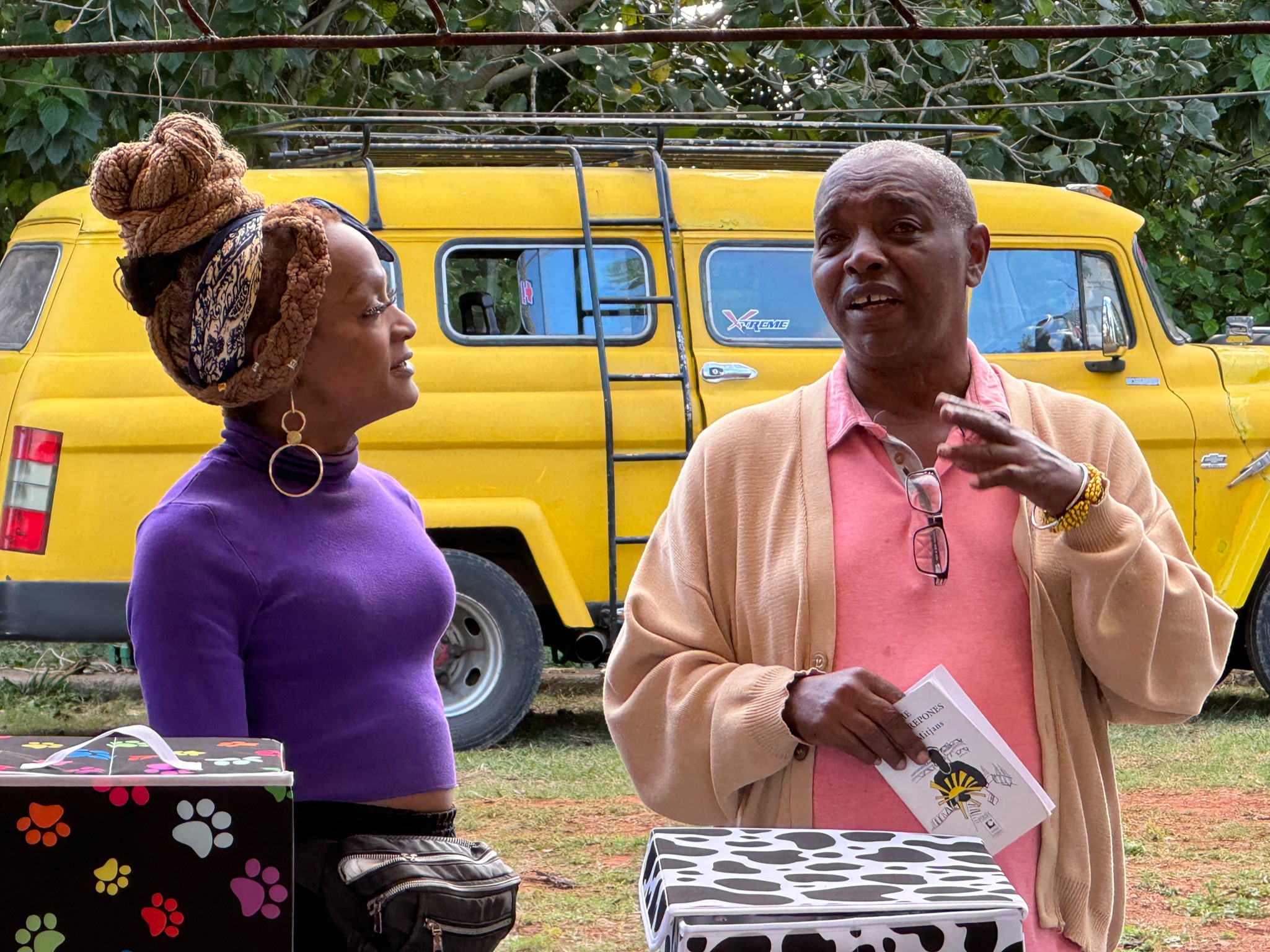
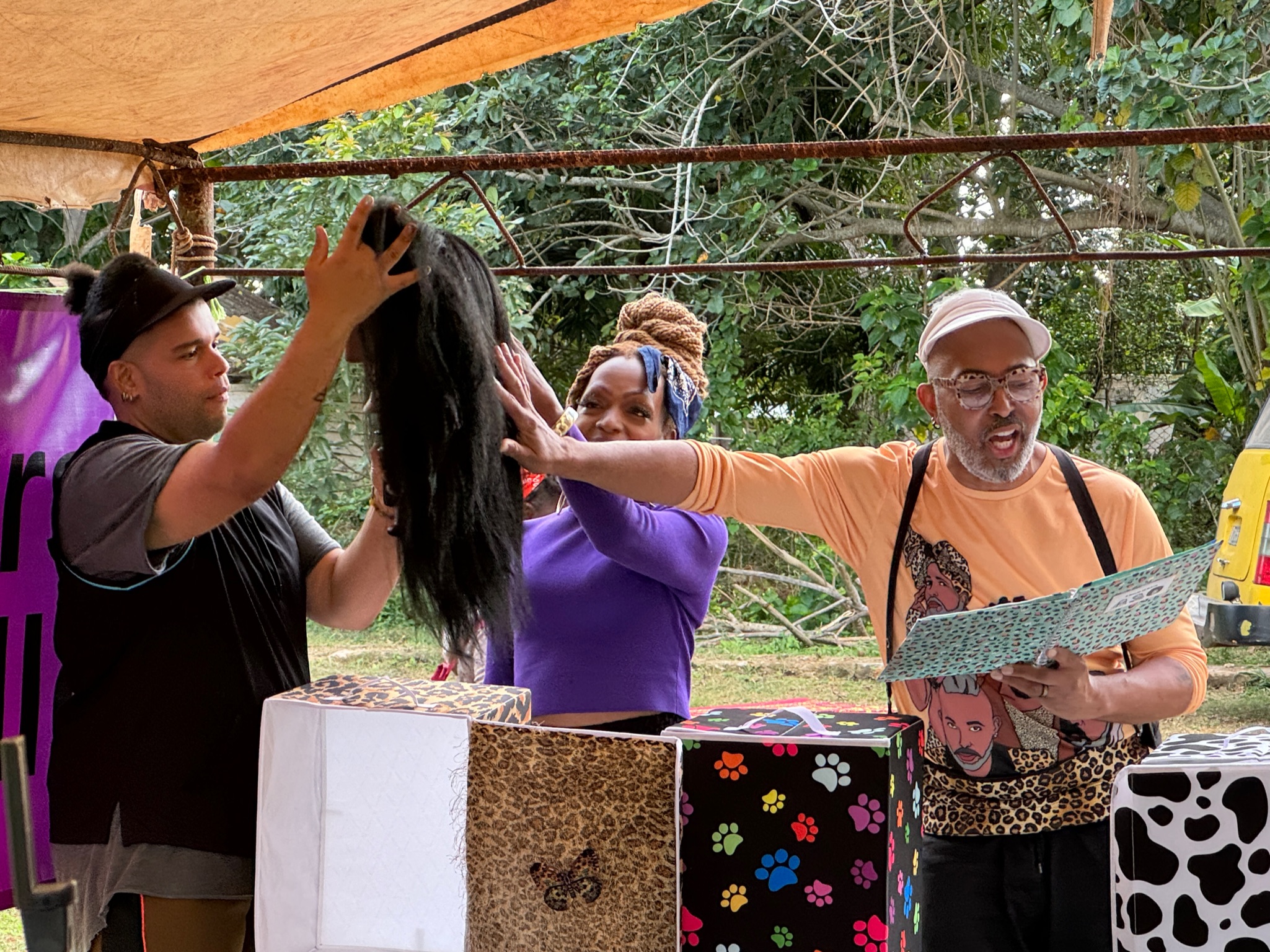
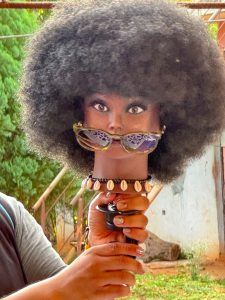
Julio Mitjans recited his poem “Los Negros Galantes” and Dale Madison performed an original story, hilariously interpreted into Spanish by Nomi Ramirez. At the Casa Tomada mirArte, we curated an exhibition of the Black dolls from the dollmakers and the dolls we made together using new techniques and a collage of materials. We performed “Poesía para Margarita,” choreographed by Margit Edwards and I, a dance to honor the ripple effect that Margarita Montalvo has had on Black dollmaking in Cuba and beyond.
ArteCalle is the culminating event at the Casa Tomada mirArte, the art opening for Edition 2. ArteCalle is also a methodology for the relationship-building and arts-based activism that occurred during the residency in Cuba. ArteCalle transforms corporealities.
The patio at Margarita’s house becomes a doll-making workshop space. The front room in Myrna’s house becomes an art gallery and the long open-roofed patio becomes a space where we danced danzón. The street in front of Myrna’s house becomes a stage and the neighbors transform the sidewalk ledge into seating.
We collaboratively present Contours ArteCalle.
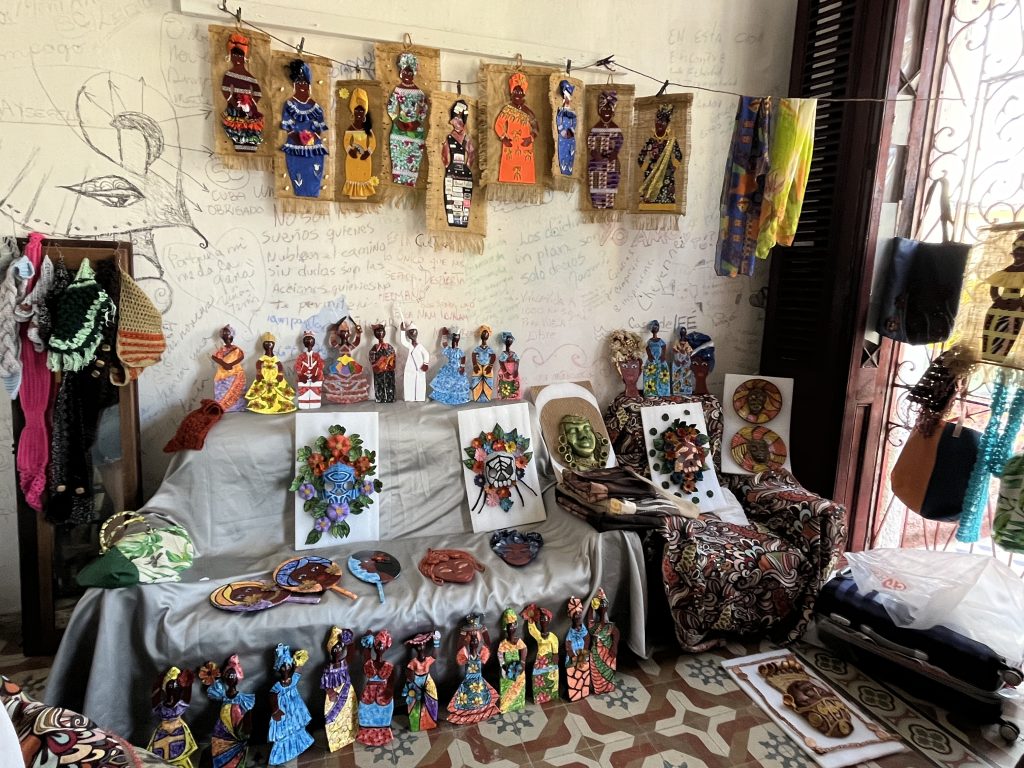
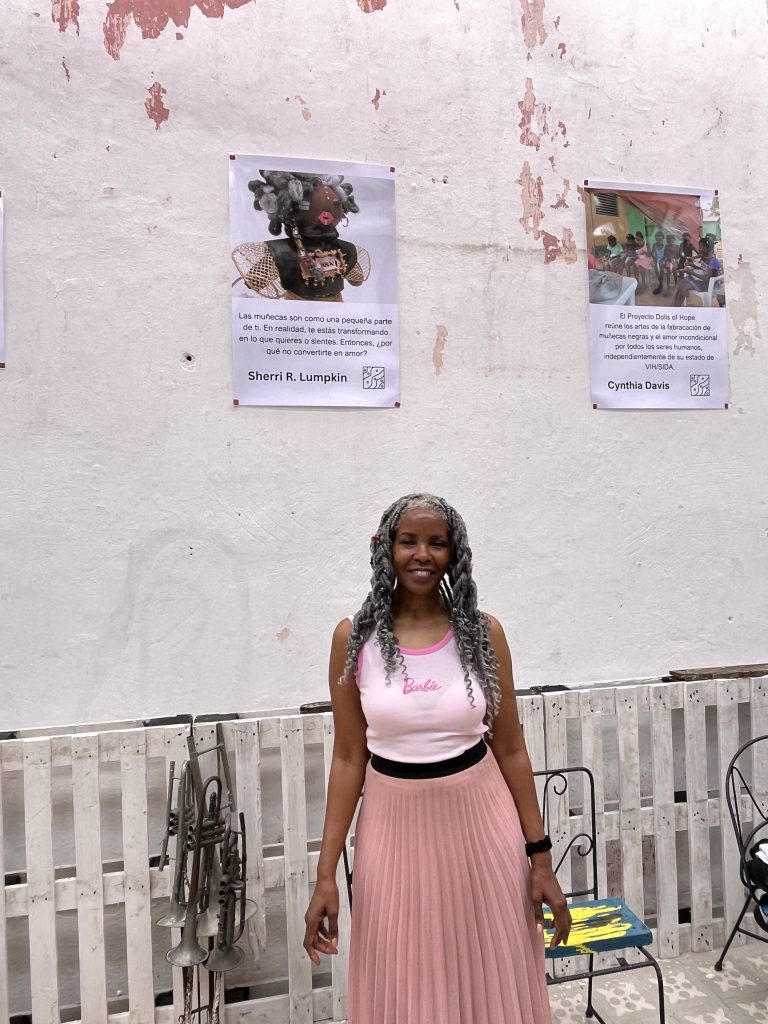
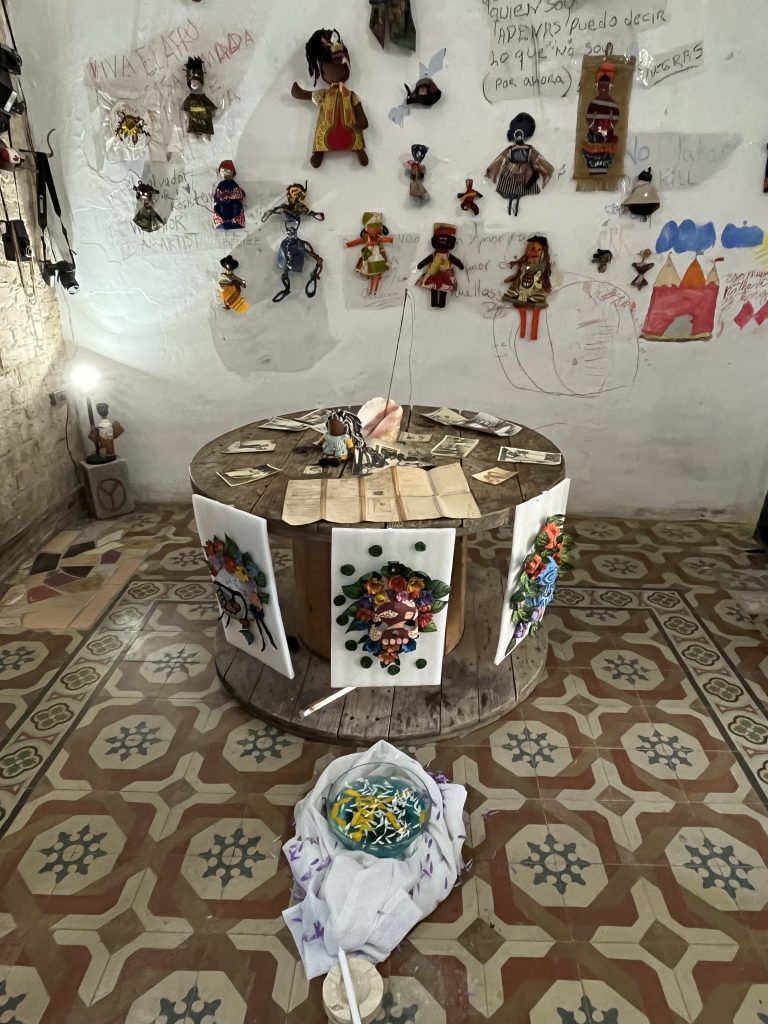
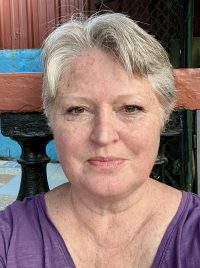
Cindy García is the Interim Chair of the Department of Art History and an Associate Professor, dance and cultural studies theorist, and performance ethnographer in the Department of Theatre Arts and Dance at the University of Minnesota. She is the founder of decolonial feminist publication, Contours ArteCalle through the University of Minnesota Libraries. This multi-authored, bilingual publication launches the Contours Project’s focus on transnational community-engaged research, anti-racism, and relationship-building in the Americas. She is the author of “The Small Activisms of Everyday Life” in Contours (2022) and Salsa Crossings: Dancing Latinidad in Los Angeles (2013).
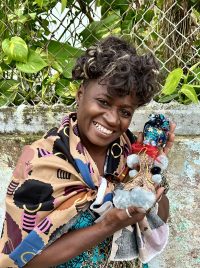
Myrna Rosa Padrón Dickson is an Art-ivist. Popular Educator. Cultural promoter specializing in community culture. General coordinator of the autonomous and interdependent lgbtiq+ initiative “Casa taken mirArte”. Take art as a tool to defeat hegemonic discourses in favor of social justice. She is proud to combine her work as a caring Housewife with research, promotion, programming and artistic production. It promotes from primary and/or academic knowledge with an Afrofeminist perspective and anti-patriarchal approach the influence of traditional Africa and its diaspora allied to various local and foreign projects.
